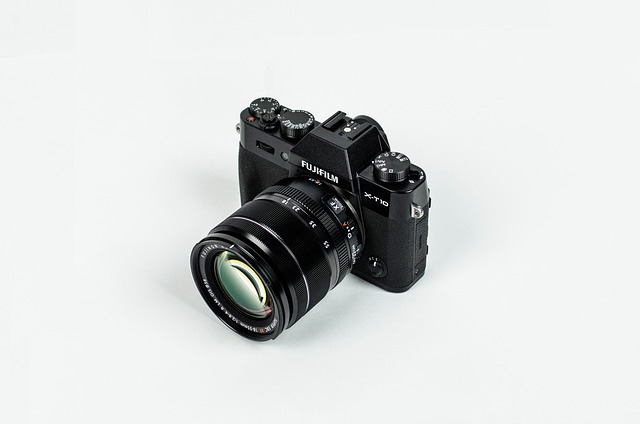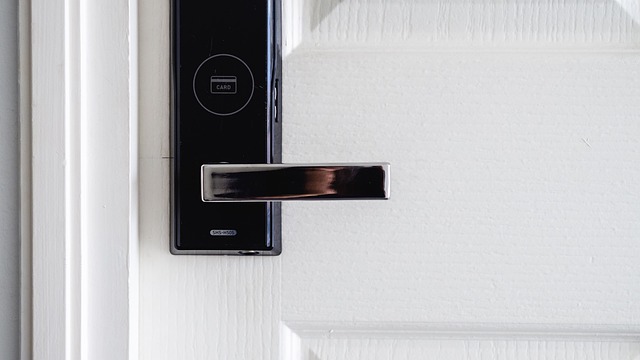Advanced RF Microneedling is a cutting-edge acne scar treatment that combines microneedles with radiofrequency energy to stimulate collagen and elastin production. This non-invasive procedure addresses structural issues, offering better results than traditional treatments for moderate to severe acne scars. It's cost-effective, requires fewer sessions, and has minimal downtime. However, potential side effects like skin irritation necessitate precautions. Consulting a dermatologist is crucial to determine eligibility and ensure optimal healing. The future of acne scar management looks promising with advancements in RF technology.
“Acne scars can leave lasting marks on one’s confidence, but advancements in skincare offer hope. This article delves into the evolution of acne scar treatments, focusing on a revolutionary approach: Advanced RF (Radiofrequency) Microneedling. We explore its mechanism, advantages over traditional methods, and suitability for diverse skin types. By understanding these techniques, you can make informed decisions towards achieving smoother, more even skin. Uncover the future of acne scar management as we compare costs and insights from experts.”
Understanding Acne Scar Formation: A Basic Overview

Acne scars form when the skin’s collagen and elastin fibers are damaged during an acne breakout. This damage can cause the skin to heal incorrectly, leading to depressions or elevated areas on the surface. Over time, these changes in skin texture and depth become permanent scars. Various factors influence scar formation, including skin type, severity of acne, and individual healing capabilities. Understanding this basic process is crucial when considering treatments like Advanced RF Microneedling, which offers a non-invasive approach to stimulating collagen production and improving skin texture.
Traditional methods often involve topical treatments or surgical procedures, but they may not address the underlying structural issues. In contrast, Advanced RF Microneedling uses fine needles to create tiny channels in the skin, encouraging the body to produce new collagen and elastin. This advanced technique has gained popularity due to its ability to enhance skin elasticity, reduce redness, and minimize the appearance of acne scars over multiple sessions.
Introduction to RF (Radiofrequency) Microneedling for Scar Treatment

Radiofrequency (RF) Microneedling has emerged as an advanced scar treatment, offering a promising alternative to traditional methods. This innovative technique utilizes tiny, controlled wounds created by microneedles, which then stimulate collagen production and repair damaged skin tissue. Unlike conventional treatments that often involve harsh chemicals or invasive procedures, RF Microneedling provides a safer and more gentle approach.
The process involves the application of radiofrequency energy alongside the microneedling process. This dual action enhances the effectiveness of collagen stimulation, resulting in improved scar texture and overall skin appearance. As a non-invasive procedure, it is suitable for various types of acne scars, offering a tailored solution for those seeking effective yet minimally disruptive treatment options.
Traditional Methods of Acne Scar Management

Acne scars can be a persistent reminder of past breakouts, but traditional methods offer various ways to manage and improve their appearance. These include topical treatments like retinoids and chemical peels, which stimulate collagen production and gently exfoliate the skin. Dermal fillers are another popular option, injecting hyaluronic acid or other substances to raise depressed scar tissue and create a smoother surface. Laser therapy, such as fractional laser resurfacing, is also effective by encouraging new skin growth and reducing pigment irregularities.
While these techniques have proven successful for many, Advanced RF Microneedling stands out as an innovative, minimally invasive procedure. This method uses radiofrequency energy delivered through fine needles to deeply penetrate the skin, triggering collagen and elastin production on a cellular level. Unlike traditional methods that primarily focus on surface-level changes, RF Microneedling addresses the underlying structure of the skin, offering potentially more long-lasting results for acne scar revision.
Advanced RF Microneedling: How Does it Work?

Advanced RF Microneedling is a groundbreaking treatment that combines radiofrequency (RF) energy with microneedling technology to address acne scars effectively. During the procedure, a device with fine, sterile needles is gently pressed against the skin, creating tiny punctures. Simultaneously, RF energy is delivered to the targeted area, stimulating collagen production and promoting skin rejuvenation. This dual action not only helps to break down scar tissue but also encourages the growth of new, healthy skin cells.
The process starts with the application of a topical anesthetic to ensure patient comfort. Then, the microneedling device is carefully glided across the skin in specific patterns. The RF energy heats the deeper layers of the skin, triggering a controlled injury response that prompts the body to heal and rebuild, resulting in smoother, more even skin texture over time. This advanced technique offers a minimally invasive way to achieve significant improvements in acne scar appearance, making it a popular choice for those seeking long-lasting solutions.
Benefits and Advantages of RF over Conventional Techniques

Radiofrequency (RF) treatments, particularly advanced RF microneedling, offer several benefits over conventional acne scar treatment methods. One of the key advantages is its ability to stimulate collagen production on a deeper level. During the procedure, controlled RF energy is delivered to the skin, encouraging the body’s natural healing process and fostering the growth of new, healthy collagen fibers. This not only improves the appearance of scars but also enhances overall skin texture and elasticity.
Another significant advantage of RF microneedling is its precision and minimal invasiveness. Unlike some traditional techniques that can cause discomfort or side effects, RF technology allows for targeted treatment with minimal downtime. The controlled stimulation of the skin promotes a more even healing response, reducing the risk of irritation or inflammation often associated with heavier interventions. As such, RF treatments are an attractive option for those seeking effective yet gentle solutions for acne scars.
Potential Side Effects and Precautions with RF Microneedling

Advanced RF Microneedling, while offering promising results for acne scar treatment, is not without potential side effects. As with any invasive procedure, there are risks to consider. One of the primary concerns is skin irritation and redness, which can occur post-treatment. This is usually temporary and should subside within a few days. More severe reactions, such as infection or inflammation, are rare but possible, especially if the device is not properly sanitized or if the patient has sensitive skin.
Precautions are essential when undergoing RF Microneedling. Patients should inform their dermatologist about any existing skin conditions, allergies, or medications they are taking. Additionally, sun exposure should be minimized both before and after treatment to avoid further irritation and potential hyperpigmentation. It’s crucial to follow the post-treatment care instructions provided by the dermatologist to ensure optimal healing and minimize risks associated with this advanced acne scar treatment method.
Who is an Ideal Candidate for RF Scar Treatment?

Ideal candidates for RF (Radio Frequency) scar treatment, often sought through advanced RF microneedling procedures, are individuals with moderate to severe acne scars who have exhausted other less invasive treatments. This procedure is particularly effective for those with atrophic scars, where the skin has sunk in or formed depressions due to collagen loss. RF microneedling stimulates collagen production by gently pricking the skin, helping to elevate and smooth out these scars over time.
It’s crucial to note that while RF treatments can significantly improve the appearance of acne scars, they may not be suitable for everyone. Factors like skin type, overall health, and specific scar characteristics play a role in determining effectiveness. Consulting with a dermatologist is essential to determine if advanced RF microneedling is the best course of action based on individual needs and goals.
Comparing Costs: RF vs Traditional Acne Scar Treatments

When comparing costs for acne scar treatments, it’s essential to consider both the upfront investment and long-term value. Traditional methods like chemical peels, laser resurfacing, or surgical procedures have been around for decades and offer proven results. However, they often come with higher price tags, especially when multiple sessions are required for optimal outcomes. On the other hand, Advanced RF Microneedling, a cutting-edge approach utilizing radiofrequency technology, presents a more affordable option. This treatment stimulates collagen production and improves skin texture in fewer sessions, potentially making it a more cost-effective solution for many individuals seeking to reduce acne scars.
Expert Insights and Future Prospects in Acne Scar Management

Expert Insights on Acne Scar Management point towards a future dominated by advanced technologies like RF (Radio Frequency) Microneedling. This innovative treatment has garnered significant attention for its ability to stimulate collagen production, a key player in scar reduction. Studies show that RF energy, when combined with precise microneedling, can enhance skin rejuvenation and texture improvement, offering promising results where traditional methods often fall short.
Looking ahead, the landscape of acne scar management is expected to be transformed by further developments in RF technology. Advanced RF Microneedling techniques are likely to become more sophisticated, providing personalized solutions for diverse skin types and scar severities. This evolution promises not just effective treatments but also safer, more comfortable experiences for patients, paving the way for a clearer, more confident future for those impacted by acne scars.
